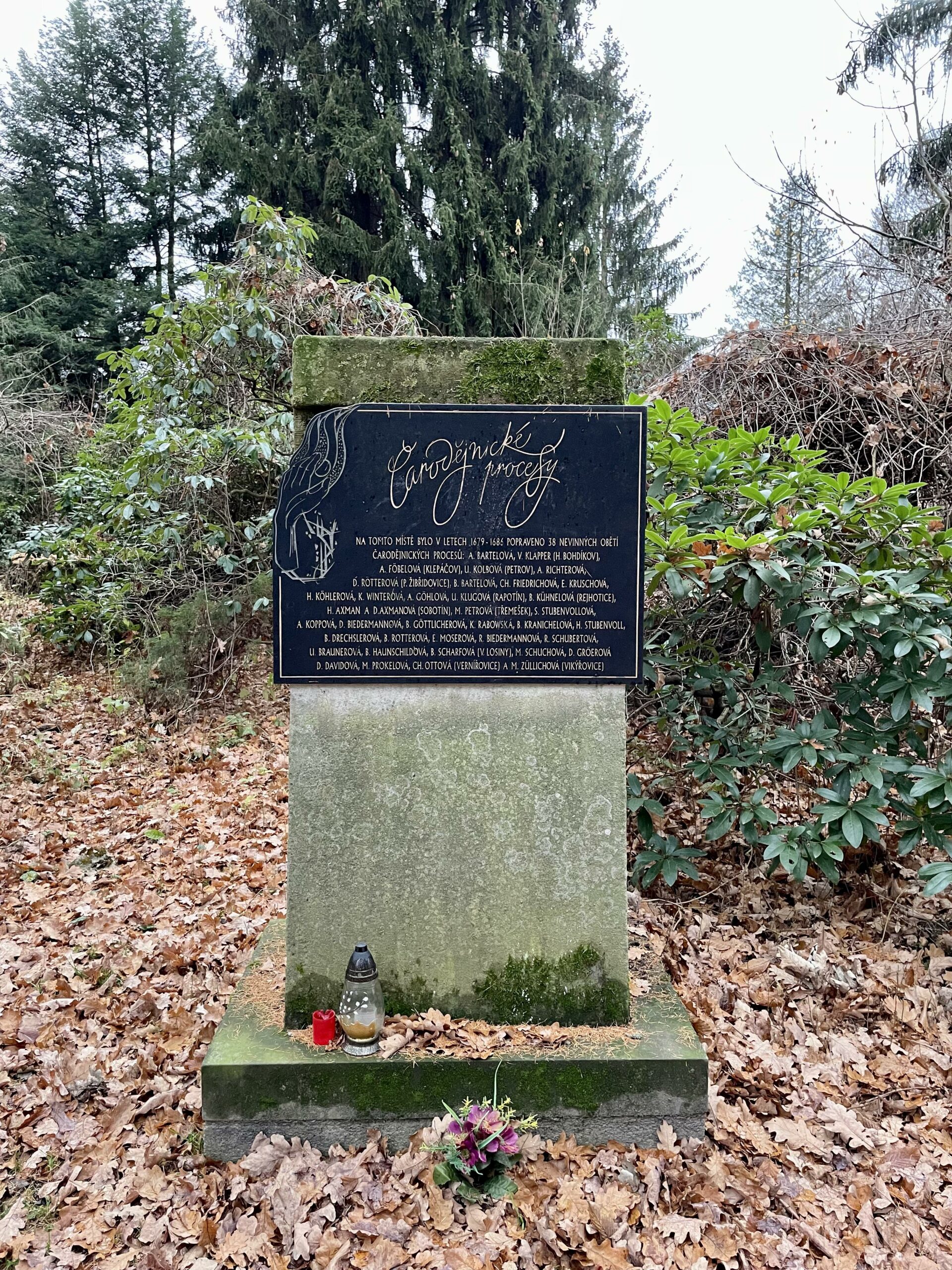The Witch Trials – Velké Losiny – Memorial to the Victims of the With Trials
Fact of the Czech figure „Religion and violence”
Part of the „Religious tolerance and intolerance” topic
Witch trials remain a compelling and emotional subject in historical memory, and the Czech lands are no exception. The wave of witch trials in the 17th century in the Czech lands reflected, among other things, the religious climate within the Habsburg monarchy. Although the Church condemned the belief in witches as a remnant of paganism, witch hunts became one way to maintain power and authority over the population during the re-catholicisation process.
The most infamous centre of “witch hunts” in the Czech lands was Velké Losiny in northern Moravia. These trials were distinguished by the severity of their punishments, the number of victims, and the unique character of the chief inquisitor, Heinrich Boblig of Edelstadt. In the trials he led from 1678 to 1696, around one hundred people were condemned, including the Dean of Šumperk, Kryštof Alois Lautner.
Boblig’s alleged cruelty and greed, which reportedly led to his enrichment at the expense of the condemned, became the subject of the 20th century novel Kladivo na čarodějnice written by Václav Kaplický, which portrayed the cruelty and absurdity of the trials as an allegory of contemporary communist dictatorship and was later adapted into a well-known film. The museums in Velké Losiny and Šumperk present the legacy of the trials as an illustrative example of the calculation of personal interests and the abuse of folk superstition.





